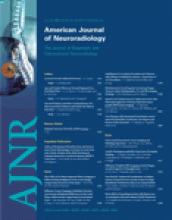Abstract
BACKGROUND AND PURPOSE: Benign and malignant fractures of the spine may have similar signal intensity characteristics on conventional MR imaging sequences. This study assesses whether in-phase/opposed-phase imaging of the spine can differentiate these 2 entities.
METHODS: Twenty-five consecutive patients who were evaluated for suspected malignancy (lymphoma [4 patients], breast cancer [3], multiple myeloma [2], melanoma [2], prostate [2], and renal cell carcinoma [1]) or for trauma to the thoracic or lumbar spine were entered into this study. An 18-month clinical follow-up was performed. Patients underwent standard MR imaging with an additional sagittal in-phase (repetition time [TR], 90–185; echo time [TE], 2.4 or 6.5; flip angle, 90°) and opposed-phase gradient recalled-echo sequence (TR, 90–185, TE, 4.6–4.7, flip angle, 90°). Areas that were of abnormal signal intensity on the T1 and T2 sequences were identified on the in-phase/opposed-phase sequences. An elliptical region of interest measurement of the signal intensity was made on the abnormal region on the in-phase as well as on the opposed-phase images. A computation of the signal intensity ratio (SIR) in the abnormal marrow on the opposed-phase to signal intensity measured on the in-phase images was made.
RESULTS: Twenty-one patients had 49 vertebral lesions, consisting of 20 malignant and 29 benign fractures. There was a significant difference (P < .001, Student t test) in the mean SIR for the benign lesions (mean, 0.58; SD, 0.02) compared with the malignant lesions (mean, 0.98; SD, 0.095). If a SIR of 0.80 as a cutoff is chosen, with >0.8 defined as malignant and <0.8 defined as a benign result, in-phase/opposed-phase imaging correctly identified 19 of 20 malignant lesions and 26 of 29 benign lesions (sensitivity, 0.95; specificity, 0.89).
CONCLUSION: There is significant difference in signal intensity between benign compression fractures and malignancy on in-phase/opposed-phase MR imaging.
- Copyright © American Society of Neuroradiology












